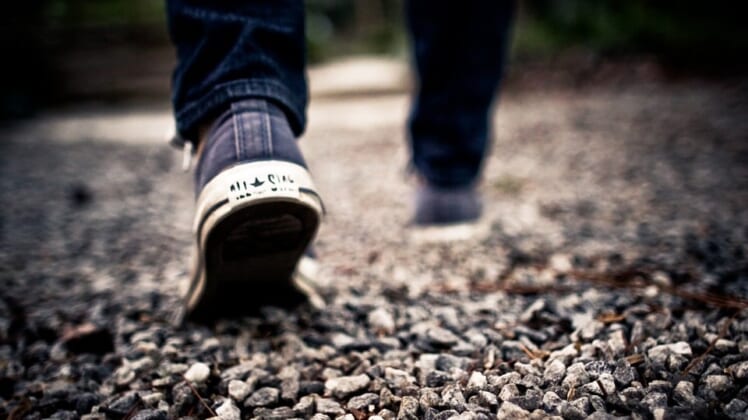Are Your Shoes Killing Your Feet?

Most of us don’t fully appreciate our feet, probably because we’re not using them the way nature intended. Your feet have 26 bones, 33 joints, and more nerve endings per square inch than anywhere else on your body. The Achilles tendon, which connects your calf muscles to your heel, is your body’s longest and strongest tendon. And your feet need all of that impressive hardware because most people will walk about 115,000 miles in their lifetimes, far enough to walk around the earth at least four times.
If our feet are so great, why are foot problems so common? The answer is simple – we’re wearing the wrong shoes. Our feet are highly specialized, painstakingly developed tools for getting around, and we’re not using them properly.
A New Path for Treating Depression
Those 33 joints are supposed to allow our flexible feet to distribute the weight of our bodies as we walk, but most of us choose shoes that immobilize all but a few joints. Additionally, the ligaments and tendons in the foot can lose their ability to function properly if they aren’t used, and shoes that immobilize the feet keep those tendons and ligaments from stretching with each step as they’re intended to.
Heavy, padded, expensive shoes mess up our gait. Most people used to wear typical shoes strike the ground firmly with their heel as they walk or run. Over time, this begins to hurt. Shoe manufacturers’ answer was to create nice, padded heels, but research shows that we may be using supportive shoes to fix a problem that’s created by wearing supportive shoes. People who aren’t used to wearing shoes usually walk by rolling from their heel up through their toes with each step, distributing the body’s weight along the length of the foot, and not only does the way they walk make good ergonomic sense, but they also have fewer foot problems. Give it a try!
A 2015 study compared barefoot walking to walking with shoes. The study agreed with previous research that shoes caused functional changes in the feet leading to greater impact and less weight distribution when walking, but they also looked at the impact of wearing lighter, more flexible shoes since going barefoot all the time isn’t very practical (something many previous studies failed to do). They found that subjects’ gaits weren’t as radically changed as they were by heavy footwear.
So, the first step in shopping for a shoe that’s going to take care of your feet is to look for something that doesn’t feel like a strait jacket for your foot. Before putting a new shoe on, try walking barefoot a few steps, slowly rolling from heel to ball with each stride. Feel how your toes spread out at the end of the stride and push you into the next. Now, when you take a few steps in your new shoes, see if it allows your feet to function properly or if it turns them into blocks of plastic to plod around on.
How to Recognize Heroin Addiction and Help with Recovery
Also, pay attention to heel height. If you look closely, you’ll notice that high heels aren’t the only shoes with high heels. Sneakers, sandals, and athletic shoes are all being sold with heels that are higher than their toes. Shoe companies bill heel support as a good thing, but the research only supports that to a certain extent. If you’re walking wrong, firmly striking the ground with your heel with each step, you’re probably in pain without a cushioned heel. But you may be better off changing your walk than changing your shoes. If your feet aren’t already injured and you’re wearing a shoe that allows your feet to distribute your body weight, you probably don’t need a big heel.
For everyday wear, look for flexible shoes without a heel, something that allows your feet to be feet. If you’re used to strong arch or heel support, you may need to ease into less supportive shoes by wearing them a little bit each day to allow your feet to adjust, and if you are already coping with foot injury, you may need to wear more supportive shoes if instructed to by your podiatrist.
